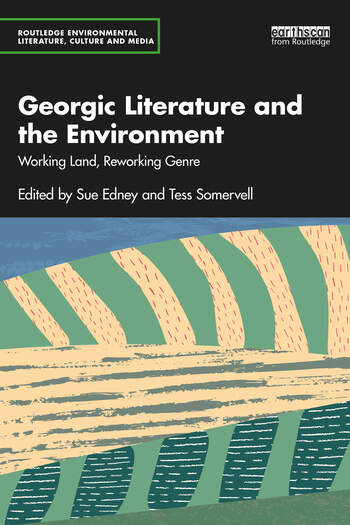Dr Sue Edney (English, Bristol) and Dr Tess Somervell (Worcester College) have just published a new book on Georgic Literature and the Environment.

This expansive edited collection explores in depth the georgic genre and its connections to the natural world. Together, its chapters demonstrate that georgic—a genre based primarily on two classical poems about farming, Virgil’s Georgics and Hesiod’s Works and Days—has been reworked by writers throughout modern and early modern English-language literary history as a way of thinking about humans’ relationships with the environment.
The book is divided into three sections: Defining Georgic, Managing Nature and Eco-Georgic for the Anthropocene. It centres the georgic genre in the ecocritical conversation, giving it equal prominence with pastoral, elegy and lyric as an example of ‘nature writing’ that can speak to urgent environmental questions throughout literary history and up to the present day. It provides an overview of the myriad ways georgic has been reworked in order to address human relationships with the environment, through focused case studies on individual texts and authors, including James Grainger, William Wordsworth, Henry David Thoreau, George Eliot, Thomas Hardy, Seamus Heaney, Judith Wright and Rachel Blau DuPlessis.
This is a much-needed volume for literary critics, academics and students engaged in ecocritical studies, environmental humanities and literature, addressing a significantly overlooked environmental literary genre.
“The georgic is the genre of the Anthropocene. More than pastoral, georgic means a working countryside, humans embedded with nonhumans, sustaining without exploiting. These essays pose critical ecological questions arising from centuries of writing from Hesiod and Virgil to John Clare, Derek Jarman and Isabella Tree. Now more than ever we need the georgic to think with.”
Donna Landry, Emeritus Professor of English and American Literature, University of Kent, UK
Table of contents:
Foreword by David Fairer
Introduction
PART I Defining Georgic
1. What Is Georgic’s Relation to Pastoral?
2. How Is Walden Georgic?
3. Middlemarch and the Georgic Novel
PART II Managing Nature
4. Agrilogistics and Pest Control in Early Modern Georgic
5. James Grainger’s The Sugar-Cane and Naturalists’ Georgic
6. Rural Frances Burney
7. Wordsworth’s Tidal Georgic
8. Wordsworth’s ‘Michael’ and the Imperilled Georgic: Questions of Agricultural Permanence
9. Georgic Culture in Thomas Hardy’s The Return of the Native: Participant Observation
PART III Eco-Georgic for the Anthropocene
10. Georgic Hope in Robert Bloomfield and John Clare
11. Seamus Heaney’s Elegiac and Domestic Georgics
12. The Semi-Georgic Australian Sugarcane Novel
13. Judith Wright and Virgil’s Third Georgic
14. Derek Jarman’s Gay Georgic
15. Georgic Reversals in Rachel Blau DuPlessis’ Days and Works Afterword

